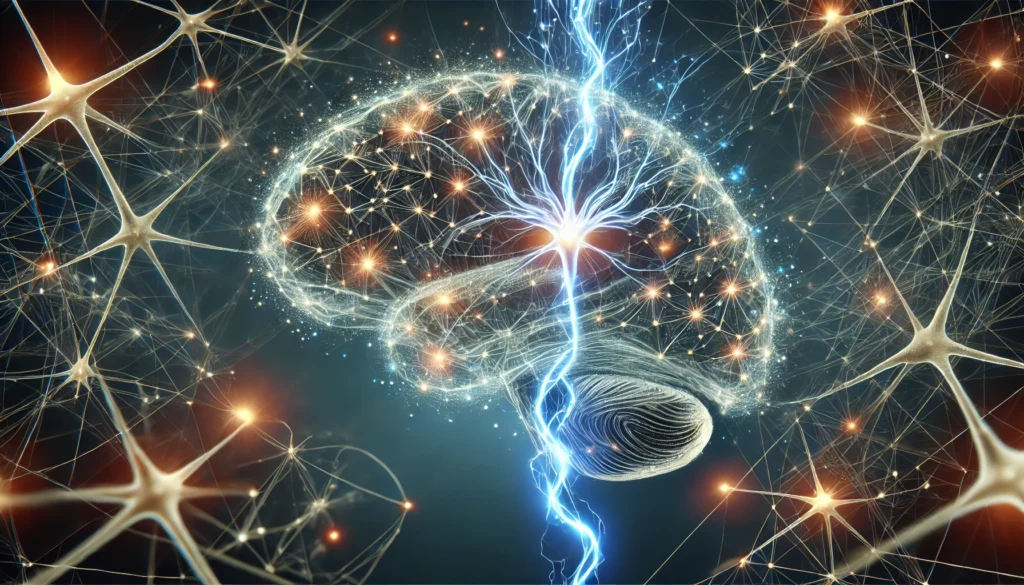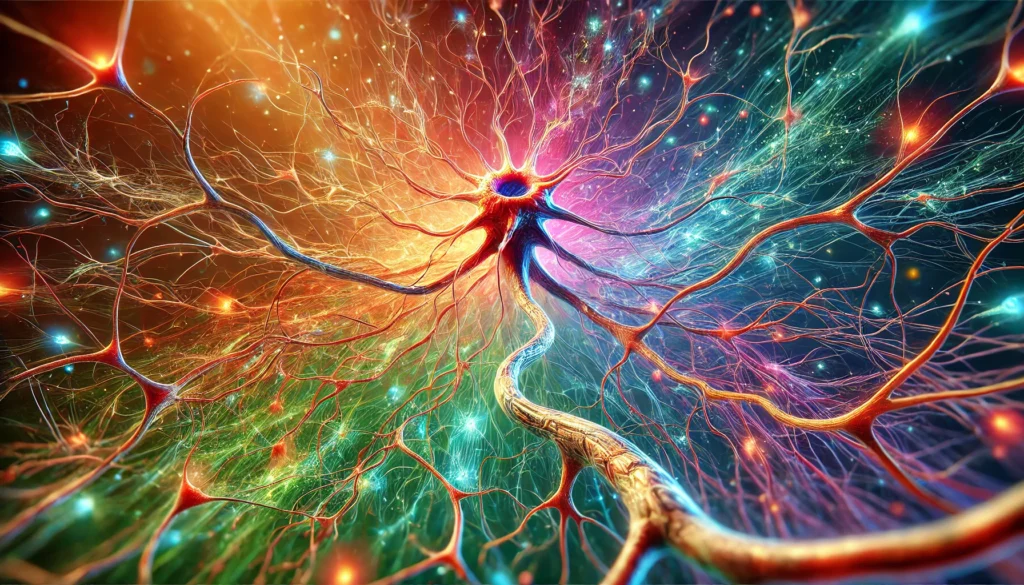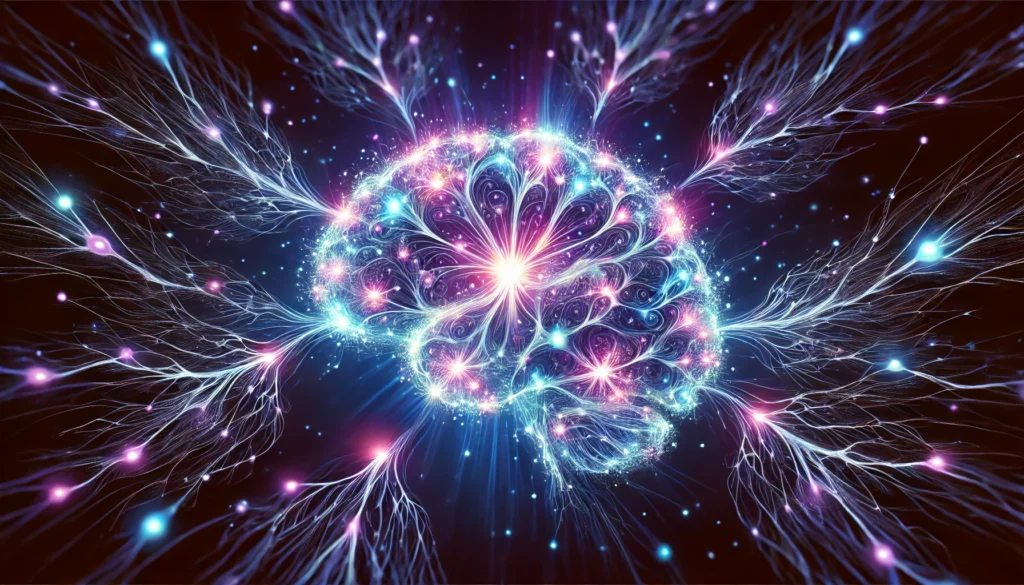The Journey from a Single Cell to a Brain Cell: An Intricate Transformation
The human brain, a marvel of biological engineering, is composed of approximately 86 billion neurons, each playing a critical role in cognition, memory, and neural communication. However, every neuron originates from a single, undifferentiated cell. How does one cell become a brain cell? This fundamental question lies at the heart of developmental neuroscience, shedding light on the mechanisms that guide cellular differentiation and neural pathway strengthening. Understanding this process not only deepens our appreciation of human neurobiology but also informs cutting-edge research on neurodegenerative diseases, cognitive enhancement, and memory improvement. The intricate transformation of undifferentiated cells into specialized neurons involves a highly regulated cascade of genetic, molecular, and environmental influences, each shaping the complex architecture of the brain.
You may also like: How to Increase Neuroplasticity: Strengthening Neural Pathways for Better Memory & Recall
The Science of Neural Differentiation: From Stem Cells to Neurons
At the earliest stages of human development, all cells begin as pluripotent stem cells, capable of becoming any type of cell in the body. As embryonic development progresses, certain cues direct these stem cells toward neural differentiation, setting them on a path to become neurons or glial cells. This specialization is driven by tightly regulated genetic instructions and signaling molecules that guide the fate of each cell. The question of how do some cells become brain cells depends on the precise activation and inhibition of specific genes, which prompt cells to take on distinct roles in the nervous system. The process of neurogenesis, or the birth of new neurons, begins in the embryonic stage and continues throughout life, albeit at a slower rate in adulthood. Within specialized regions of the brain, such as the hippocampus, new neurons integrate into existing neural networks, contributing to memory formation and learning.
Epigenetics and the Regulation of Neural Development
While genetic coding provides the blueprint for neural differentiation, epigenetic mechanisms act as the architects, influencing how genes are expressed without altering the underlying DNA sequence. Epigenetics encompasses processes such as DNA methylation, histone modification, and non-coding RNA regulation, which collectively determine whether a stem cell will become a neuron or another type of cell. These mechanisms are dynamic, allowing the brain to respond to environmental stimuli, stress, and learning experiences. How does one cell become a brain cell is a question that cannot be fully answered without considering epigenetic factors, which serve as critical regulators of brain development and function. Emerging research suggests that certain lifestyle factors, including diet, exercise, and cognitive stimulation, can influence epigenetic patterns, thereby affecting neural plasticity and cognitive health.
The Role of Neurotrophic Factors in Neural Pathway Strengthening
Neurotrophic factors, a group of proteins essential for neuron survival, differentiation, and synaptic connectivity, play a pivotal role in strengthening neural pathways. Brain-derived neurotrophic factor (BDNF), in particular, is crucial for memory consolidation and learning. By promoting dendritic growth and synaptic plasticity, BDNF enhances the efficiency of neural circuits, allowing for better information retention and recall. The production of neurotrophic factors is influenced by various factors, including physical activity, mental engagement, and nutritional intake. Studies have demonstrated that aerobic exercise significantly increases BDNF levels, underscoring the importance of an active lifestyle in cognitive health. Understanding how do some cells become brain cells involves recognizing the contributions of neurotrophic factors in guiding cellular differentiation and sustaining neural networks.

Synaptogenesis and the Formation of Neural Networks
As neurons mature, they extend axons and dendrites, forming intricate networks that facilitate communication across different regions of the brain. This process, known as synaptogenesis, is vital for cognitive development, learning, and memory. Each neuron establishes thousands of synaptic connections, creating a dense web of interactions that underpin thought processes and behavioral responses. How does one cell become a brain cell and integrate into such an elaborate network? The answer lies in the precise coordination of synaptic signaling, neurotransmitter release, and receptor activation. During early childhood, synaptic connections proliferate at an astonishing rate, followed by a process called synaptic pruning, where weaker or unnecessary connections are eliminated to enhance neural efficiency. This selective strengthening and refinement of synapses ensure that the brain operates with maximum effectiveness, adapting to new information and experiences.
The Influence of Environmental Factors on Neural Development
Neural development does not occur in isolation; it is profoundly influenced by environmental stimuli, social interactions, and cognitive challenges. Early childhood experiences, including language exposure, problem-solving tasks, and sensory inputs, shape neural circuitry in ways that impact lifelong cognitive abilities. How do some cells become brain cells capable of advanced functions? The brain’s plasticity enables it to adapt based on external experiences, reinforcing the notion that learning and mental engagement are essential for cognitive resilience. Studies have shown that enriched environments—those filled with diverse stimuli and opportunities for learning—promote dendritic complexity and synaptic strength, ultimately enhancing memory and recall abilities. Conversely, prolonged exposure to stress and deprivation can hinder neural development, highlighting the importance of fostering a stimulating and supportive environment for cognitive growth.
The Role of Sleep in Memory Consolidation and Neural Strengthening
Sleep is a fundamental component of brain function, playing a critical role in memory consolidation and neural plasticity. During sleep, the brain undergoes synaptic remodeling, reinforcing important connections while pruning weaker ones. Research indicates that deep sleep stages, particularly slow-wave sleep, are essential for transferring information from short-term to long-term memory. How does one cell become a brain cell that retains and processes information effectively? The answer is intricately tied to sleep’s impact on neuroplasticity. Sleep deprivation, on the other hand, impairs synaptic function, reducing cognitive performance and memory retention. Prioritizing healthy sleep patterns, including consistent sleep schedules and sufficient duration, enhances the brain’s ability to encode and retrieve information, ultimately strengthening neural pathways.
Harnessing Neuroplasticity for Cognitive Enhancement
Neuroplasticity, the brain’s ability to reorganize and form new neural connections, is a key mechanism underlying learning and memory. Engaging in activities that challenge cognitive function—such as problem-solving, language acquisition, and creative pursuits—stimulates neuroplasticity, allowing the brain to adapt and grow. How do some cells become brain cells that contribute to enhanced cognitive function? By actively participating in mental exercises, individuals can reinforce neural circuits and optimize brain performance. Techniques such as mindfulness meditation, brain-training programs, and strategic memory exercises have been shown to enhance synaptic connectivity and cognitive flexibility. By embracing lifelong learning and intellectual curiosity, individuals can harness neuroplasticity to maintain sharp mental acuity and resilience against cognitive decline.
Frequently Asked Questions (FAQ): Neural Pathway Strengthening and Brain Cell Development
1. What environmental factors influence how some cells become brain cells?
Environmental factors play a crucial role in determining how do some cells become brain cells, as exposure to external stimuli can either enhance or inhibit neural development. Factors such as prenatal nutrition, toxin exposure, and early childhood experiences shape neural differentiation by influencing gene expression and epigenetic markers. Proper maternal health, including folic acid intake and avoiding harmful substances, ensures that neural stem cells differentiate appropriately into functional neurons. Additionally, enriched environments with cognitive stimulation, such as diverse learning experiences and social interactions, promote synaptogenesis, strengthening neural pathways from an early age. Understanding these influences highlights the importance of lifestyle choices in optimizing brain health and cognitive function throughout life.
2. How does one cell become a brain cell in adults, and is this process different from early development?
While neural differentiation primarily occurs during embryonic development, the adult brain retains a limited ability to generate new neurons, mainly in the hippocampus. How does one cell become a brain cell in adulthood differs from early development due to changes in neural plasticity and decreased stem cell activity. Adult neurogenesis is largely influenced by lifestyle factors such as exercise, mental stimulation, and stress management, which regulate neurotrophic factors like BDNF (Brain-Derived Neurotrophic Factor). Unlike embryonic differentiation, which is highly structured and driven by genetic blueprints, adult neurogenesis relies more on environmental enrichment and personal habits. Research continues to explore methods to enhance this process, offering potential interventions for age-related cognitive decline and neurodegenerative diseases.
3. What role do neurotransmitters play in determining how some cells become brain cells?
Neurotransmitters act as chemical messengers that significantly influence how do some cells become brain cells by guiding neural differentiation and synaptic connectivity. During brain development, neurotransmitters such as dopamine, serotonin, and glutamate regulate the maturation of neural circuits and synaptic plasticity. For instance, serotonin plays a critical role in early brain formation by influencing cell migration and axonal growth, while dopamine contributes to reward-related learning and executive function. Imbalances in neurotransmitter activity during development can lead to neurological disorders such as autism and schizophrenia. Studying these biochemical interactions provides insights into targeted therapies that could promote healthy neural development and cognitive enhancement.

4. Can stress or trauma impact how one cell becomes a brain cell?
Chronic stress and trauma can significantly alter how does one cell become a brain cell by affecting neural plasticity and synaptic resilience. Prolonged exposure to stress hormones like cortisol disrupts neurogenesis and reduces the formation of new neurons, particularly in the hippocampus, which is essential for memory and learning. Early-life trauma can also cause long-term epigenetic modifications that alter gene expression patterns, leading to persistent changes in brain function. However, engaging in resilience-building activities such as mindfulness, therapy, and physical exercise can counteract these effects by promoting synaptic repair and neurogenesis. Understanding these dynamics highlights the necessity of mental health interventions to support optimal cognitive function and emotional well-being.
5. How do some cells become brain cells in response to learning and memory activities?
Cognitive activities and learning experiences actively shape how do some cells become brain cells by reinforcing neural connections and enhancing synaptic efficiency. Engaging in complex problem-solving, learning new languages, or playing musical instruments stimulates neuroplasticity, leading to the growth of dendritic branches and increased synaptic density. Studies have shown that repeated exposure to intellectually stimulating activities strengthens neural pathways, allowing neurons to integrate more effectively into existing circuits. This process ensures that brain cells are not only formed but also functionally incorporated into networks responsible for memory recall and decision-making. Encouraging lifelong learning is essential for maintaining neural vitality and preventing cognitive decline.
6. Can nutrition influence how one cell becomes a brain cell?
Diet plays a fundamental role in how does one cell become a brain cell, as proper nutrient intake supports neural development and maintenance. Essential fatty acids such as omega-3s, found in fish and flaxseeds, contribute to membrane fluidity and synaptic function. Antioxidants from fruits and vegetables help reduce oxidative stress, which can damage neural cells and impede differentiation. Additionally, vitamins such as B12 and folate are crucial for DNA methylation processes that regulate neural gene expression. A well-balanced diet not only facilitates healthy neurodevelopment in infancy but also supports ongoing cognitive function throughout adulthood.
7. How do sleep patterns affect how some cells become brain cells?
Sleep is vital for the consolidation of neural circuits and significantly influences how do some cells become brain cells, particularly during memory formation. During deep sleep, the brain engages in synaptic remodeling, strengthening important neural connections while pruning weaker ones to enhance efficiency. Additionally, cerebrospinal fluid flow increases during sleep, removing toxins that can impair neural function. Sleep deprivation disrupts this process, leading to cognitive deficits, impaired memory retention, and reduced neurogenesis. Ensuring consistent and restorative sleep patterns is crucial for optimizing brain function and supporting the formation of new neurons.
8. Is it possible to accelerate or enhance how one cell becomes a brain cell?
While neural differentiation follows a biologically regulated process, certain lifestyle choices can enhance how does one cell become a brain cell. Engaging in physical exercise increases the release of neurotrophic factors, promoting the survival and integration of new neurons. Cognitive training, such as engaging in puzzles or strategy-based games, reinforces synaptic strength and connectivity. Additionally, exposure to novel experiences and social interactions stimulates the brain, encouraging new neural pathways to form. While genetic predispositions set the foundation for neural development, behavioral interventions offer significant potential for optimizing cognitive function and brain plasticity.
9. How do genetics influence how some cells become brain cells?
Genetics provide the fundamental instructions that determine how do some cells become brain cells, governing everything from cellular differentiation to synaptic organization. Specific genes regulate the production of proteins essential for neural growth, such as nerve growth factors and synaptic adhesion molecules. Mutations or genetic variations can alter these processes, leading to neurological conditions such as Alzheimer’s or developmental disorders like dyslexia. However, environmental interactions can modify gene expression through epigenetic mechanisms, meaning lifestyle choices can still influence neural health. Advances in genetic research continue to reveal pathways for potential therapeutic interventions aimed at enhancing neural development.

10. How does neuroplasticity relate to how one cell becomes a brain cell?
Neuroplasticity is a fundamental principle that governs how does one cell become a brain cell, allowing the brain to adapt and reorganize itself in response to new experiences. This adaptability ensures that neurons remain functional and capable of forming new connections even in response to injury or aging. Rehabilitation techniques for stroke recovery, for example, leverage neuroplasticity to retrain different brain regions to compensate for lost function. Engaging in continuous learning and skill development enhances neuroplasticity, reinforcing the ability of brain cells to integrate into complex neural networks. Harnessing neuroplasticity through targeted interventions presents promising opportunities for improving cognitive performance and resilience throughout life.
Conclusion: Unlocking the Full Potential of the Brain
The journey from a single undifferentiated cell to a fully functional brain cell is a testament to the complexity and adaptability of the human nervous system. Understanding how does one cell become a brain cell reveals the intricate interplay of genetic, epigenetic, and environmental factors that shape neural development and function. By fostering neuroplasticity, engaging in cognitive challenges, maintaining an active lifestyle, and prioritizing sleep and nutrition, individuals can optimize memory and recall abilities while strengthening neural pathways. The brain, with its remarkable capacity for growth and adaptation, holds immense potential for lifelong learning and cognitive enhancement. As neuroscience continues to unravel the mysteries of neural differentiation and pathway strengthening, the possibilities for cognitive optimization and neurological health remain boundless.
Further Reading:
Brain Basics: The Life and Death of a Neuron
From Neurons to Neighborhoods: The Science of Early Childhood Development.
Making and breaking connections in the brain
Important Note: The information contained in this article is for general informational purposes only, and should not be construed as health or medical advice, nor is it intended to diagnose, prevent, treat, or cure any disease or health condition. Before embarking on any diet, fitness regimen, or program of nutritional supplementation, it is advisable to consult your healthcare professional in order to determine its safety and probable efficacy in terms of your individual state of health.
Regarding Nutritional Supplements Or Other Non-Prescription Health Products: If any nutritional supplements or other non-prescription health products are mentioned in the foregoing article, any claims or statements made about them have not been evaluated by the U.S. Food and Drug Administration, and such nutritional supplements or other health products are not intended to diagnose, treat, cure, or prevent any disease.


